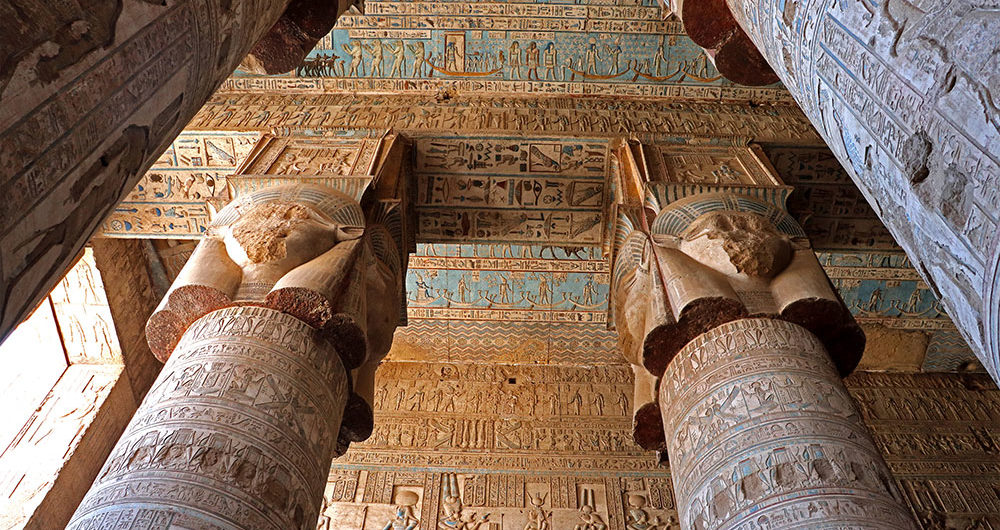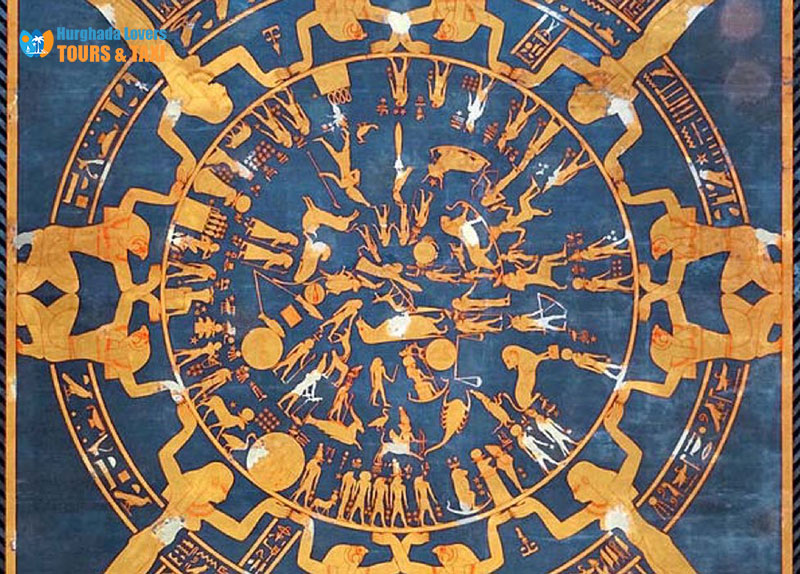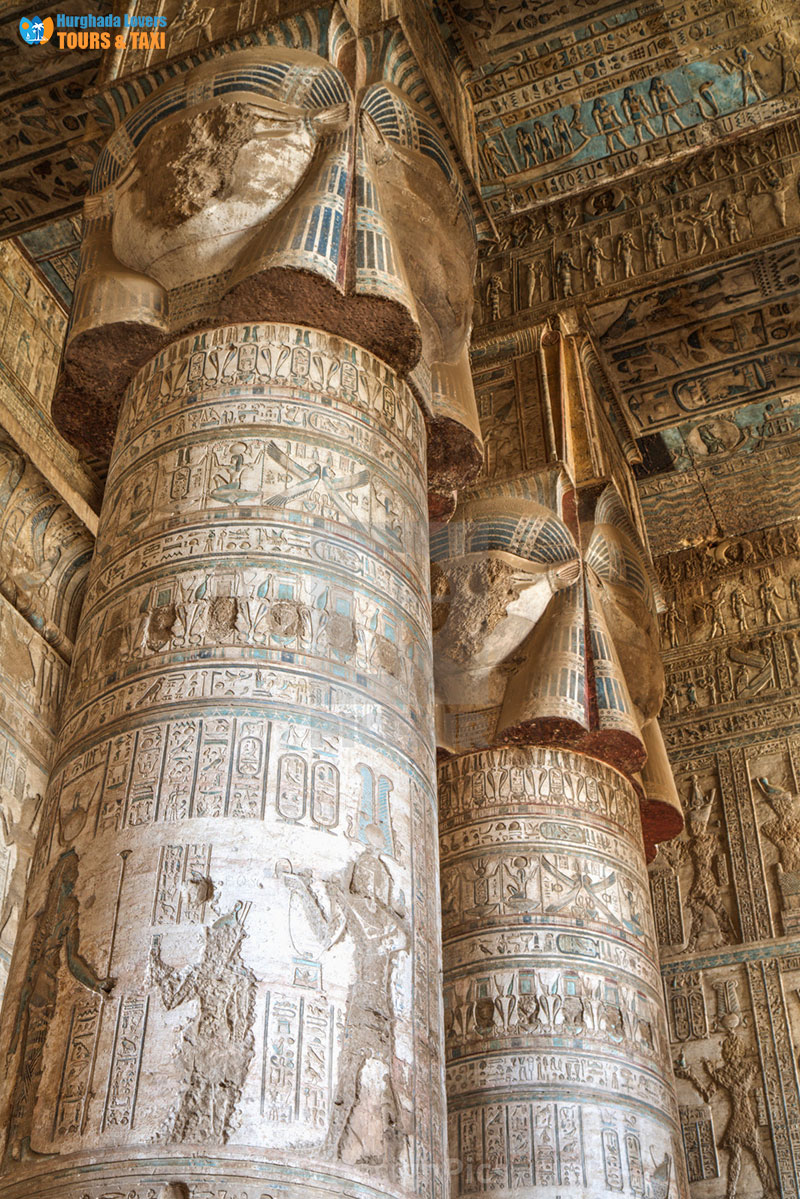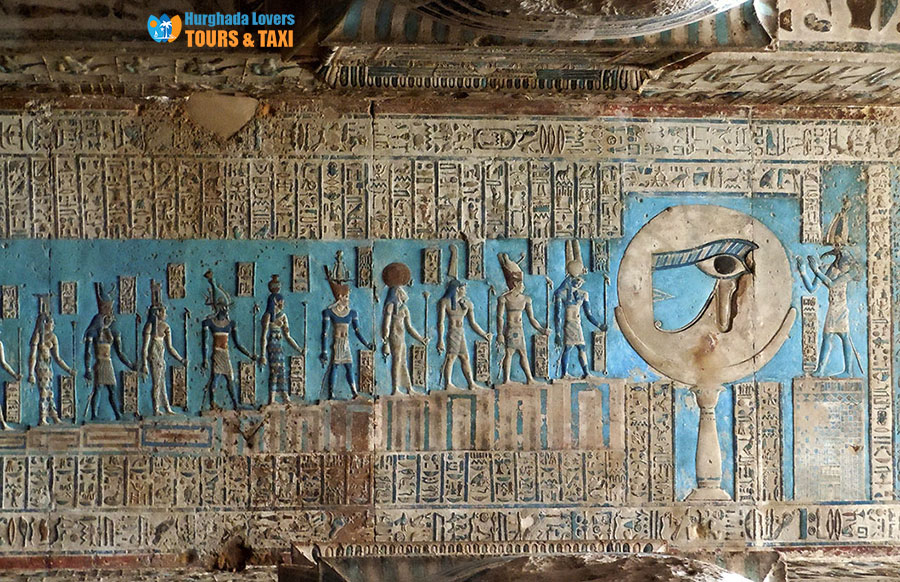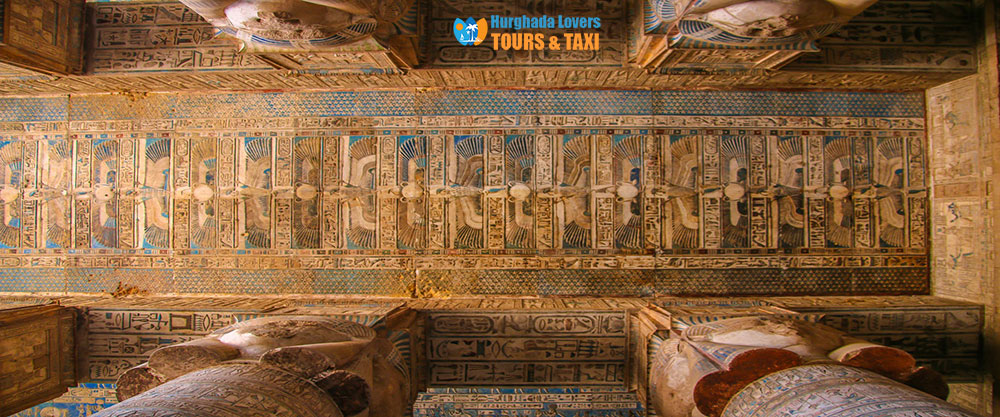Temple of Dendera in Qena Egypt | Best Things to Do in Luxor | The Temple of Hathor
History, Secrets, Facts Dendera Temple Complex Zodiac, Ceiling, Light Bulb, Temple of Cleopatra, Hathor.
The Pharaonic Temple of Dendera – History Of Egyptian & the construction of the Temple of Hathor, the most important Pharaonic Temples preserved in ancient Egypt of Qena.
Secrets about why the temple was built and a complete map to describe the temple from the inside and what are the legends of light and the phenomenon of perpendicularity of the sun and ticket prices to enter the temple and the dates of work and visit to start your cultural tourist Luxor City Tours & Things to Do in Egypt.
What it contains are burial halls, drawings of the Pharaonic Civilization, what are the prices of tickets to enter the temple, the dates and times of visits and more secrets of the most famous temples well preserved in Egypt.
Hurghada lovers Offer Luxury Hurghada to Luxor Tours | El Gouna to Luxor Tours | Makadi bay to Luxor Tours | Sahl Hasheesh to Luxor Tours | Soma bay to Luxor Tours.
Temple of Dendera in Qena Egypt | The Temple of Hathor
Temple area: 40,000 square meters
The date of construction of the temple: The Ptolemaic period.
Height: 10meters.
Width of the façade of the temple = 35 meters
Height = 13 m
The region of Dendera is located 80 km from Qena, where it was considered the seat of the cult of Hathor among the Pharaohs, the name Dendera is derived from the ancient name Ta Neteret which means the goddess referring to Hathor who was replaced by the Greeks with their goddess Aphrodite, who was the Goddess of Love and Dance among the ancient Greeks.
The Temple of Dendera built in Greek and Roman times but was developed in the Ptolemaic era of King Ptolemy IX at the end of the second century BC. C.
The temple is characterized by many chambers found in the thickness of the walls and crypts below ground level and the addition of movable rock panels inside to reflect the strength of the technical construction of the temple.
facts:
Dandara is located on the west bank of the Nile, five kilometers northwest of the city of Qena. That is, Hathor, and the Greeks expressed this name with the word “Tetris”, and the Arabs expressed it with the current word Dandara.
Dandara was the capital of the sixth province of Upper Egypt, and the city was famous in Egyptian mythology that dates back to prehistoric times as being the scene of one of the great battles that took place between Horus, the idol of Edfu, and Set, the god of evil. Uniting the two lands.
It seems that this system was also replaced in the Ptolemaic era by the Babylonian zodiac system that the Greeks adopted with other Babylonian astronomical and astrological data, so they modified their system with it, then they modified the Egyptian system of astronomy and astrology. Thus, the Egyptian signs of the zodiac became parallel to the Babylonian and Greek ones that are known to us today. In this way, we will learn about the appropriate signs for this system in its Egyptian form.
Egyptian astrology in the Hellenistic period (Greco-Roman):
With the advent of the fourth century BC, Babylonian astrology entered Greek culture. Then the Greeks transferred it to the Egyptians in the Hellenistic era because they found a different astrological system in Egypt that they did not identify with and did not find any benefit in it. By the advent of the second century BC, Egyptian astrology was mixed with Babylonian astrology.
As a result of this, due to the content of Babylonian astrology, there was a connection between the star systems and the heavenly planets and the date of human birth, so he used the straight ascension (the degree of height of the celestial circle at the time of birth), and his relationship to the twelve constellations appeared.
The Greeks linked the Babylonian constellations to the Greek philosophy, which believes that the universe consists of four elements (water, air, fire, and dirt). Thus, a new mixture of constellations, the four elements, and human destiny arose in a hybrid science that affected the constellations and made them as we know them today. The Dendera Temple was the most important evidence of this era.
The current building of the Dendera Temple dates back to the Greco-Roman era, starting from the reign of Ptolemy VIII (Soter II), who ruled in approximately 116 BC, and ending with the era of Trajan 117 AD. The temple is characterized by balance and strength from an architectural point of view.
And its important scenes, whether those related to the establishment of the temple and its devotion to deities, or those dealing with religious rites and rituals, or those that record the philosophy of the ancient Egyptians regarding the heavenly bodies and the zodiac signs. Among the characteristics of this temple are the ornate vaults formed in the thickness of the walls or in the foundations below the surface of the earth, which numbered twelve secret vaults decorated with religious scenes. The temple consists of a paved road.
Important monuments in the temple of Dendera from the inside:
- A large courtyard housed three temples.
- The Temple of Hathor
- The temple of divine birth (mamisi) which was built during the reign of the Roman emperor Augustus.
- The Sacred Lake
- The temple of Mamisi is in front of the entrance, it was built during the 26th dynasty and was built during the reign of King Nekhtanebo II.
- The Christian Basilica
- The Roman Mamisi
- The Gates of Domitian and Trajan
- The Roman kiosk.
- The hypostyle hall with 18 columns and another hall with 16 columns.
- The Incense Chamber
- Harvest hall
- The Hall of Offerings
- Smitty’s Room of Offerings
- The Room of Liquid Offerings for Wine and Milk
- Hall of the Priestesses
Pharaonic drawings and inscriptions of the festivals at the time of the pharaohs and offerings to the gods by kings.
The reason for the construction of the temple of Dendera:
The temple was built to practice the religious rites of the pharaohs, in front of the Goddess Hathor, the goddess of love, beauty and motherhood of the ancient Egyptians and her husband the God Horus.
Who built the temple of Dendera?
- This was the beginning of the reign of King Ptolemy III in the first century BC.
- Then King Ptolemy XI.
- The Greco-Romanera.
- The temple was opened during the reign of the Roman Emperor Augustus, known as Emperor Augustus.
- Several temples were built through the ages inside the temple but were destroyed.
- King Thutmosis III, King Ramses II “Egyptian Pharaohs kings” and King Ramses III built funerary temples there.
- Queen Cleopatra VII restored the temple and built many buildings there.
The importance of the Temple of Dendera:
- It contains a map of the sky, stars, and very important archaeological zodiac signs.
- Contains columns of pharaonic colors and inscriptions that retain their quality until now.
- The sun perpendicular on the chapel of Emperor Augustus in the sanctuary twice a year, on February 4 and November 8.
The legend of the light of the temple of Dendera:
The Temple of Hathor contains stone inscriptions in the wing of light that represent the light in the legendary ancient Egyptian culture of the pillar of Djed and the sacred lotus flower with a snake inside.
The tombs in the cemetery of Dendera:
A collection of Pharaonic Tombs and mastabas dating from the first dynasty of the Old Egyptian Kingdom to the time of the Middle Kingdom has been discovered.
The tombs are located between the eastern edge of the west hill and the eastern plain and have 12 rooms.
You will find pharaonic inscriptions dating from the time of King Ptolemy XII as well as a collection of crypts to guard the vessels and ritual tools.
You will see drawings in the second room of King Pepi, from the Sixth Dynasty, carrying a statue of the goddess Hathor.
The Chapel of The Zodiac Signs in Dendera:
It is a carved circle of pharaonic inscriptions and drawings from the Greco-Roman era, where you will see drawings of the 12 zodiac signs like Libra and Taurus and the other 10 signs.
In 1820 AD, the sculpture was stolen, and it is now on display at the Louvre Museum in Paris, France, where the astronomical zodiac and a complete astronomical map were painted on the roof of the temple.
The most important celebrations and festivals of the time of the pharaohs celebrated in the temple of Dendera:
- The visit of the god Horus to Hathor, built of sandstone and buried for long periods under the sand until it is discovered.
- Sacred wedding day between Hathor and Horus Behdeti
- The beginning of the year and the separation of floods
- Full moon
- Coronation of the king on the throne of Egypt.
Temple of Hathor:
Tombs from the 5th and 6th dynasties were found, with the temple surrounded by 3 large walls, but over time they perished and there were only two left. Inside the temple, you will also see chapels to worship the Goddess Isis, the god Osiris and statues of the death and resurrection of Osiris.
Over time and conditions of erosion and climate, most of the features of the temple have been destroyed, where the entrance has been destroyed and there are only two small sphinxes, where you will see a sacred lake for the pharaohs as well as a chapel and a room with a statue of the Goddess Hathor inside.
The plan of the temple of Hathor:
- The large hypostyle room.
- The small hypostyle room.
- Warehouse
- Room of offerings.
- Exit to the stairway
- Offering Room
- Hall of the Ennead of Heliopolis.
- Dendera Cemetery
- Isis Cemetery
- Cemetery of Sokaris.
- Haristomtus Cemetery
- Cemetery of the Sistrum of Hathor.
- House of Gods of Lower Egypt
The interior plan of the temple of Hathor:
Your journey will begin from an 18-column The Hypostyle Hall with the unique astronomical entrance of light and shadow, as well as drawings on the wall of the emperor wearing the crown of Lower Egypt as he leaves his palace for the coronation ceremony in the presence of the gods Horus and Hathor.
On the other hand, the pharaonic inscriptions of the emperor wearing the crown of Upper Egypt offer offerings to Hathor, as well as a map of the cione and the representation of the goddess of the sky, the goddess Nut, and the astronomical symbols of the zodiac on the ceiling of the hall.
You will see a small room with 3 columns in two rows known as the landscape room, where the base of the columns was built of granit stone and degree crowns.
You will see pharaonic inscriptions on the walls of the worship rituals practiced in the temple, where the texts of the pharaohs are to be read counterclockwise while drawings in the left direction of the room are read in the same direction as the clockwise, a king offering offerings to Hathor and Horus.
There are 6 rooms around the main hall of the columns, then two rooms with an architectural design that are the first in front of the second to offer offerings and a staircase to climb to the roof of the temple and the second room is called the room of the Ennead to preserve the clothes and tools of the gods as according to the religious beliefs of the pharaohs.
There is a room on the left to keep the cloth and the book and the second is called the treasure room, then the small courtyard, then the known worship room of the pharaohs “Rait” of the ceremonies of worship of the goddess Hathor and the God Ra on the date of the harvest and the New Year.
The Sanctuary – Temple of Dendera:
There is a front room surrounded by 12 small rooms, where you will find the great resting place for the preservation of the boats of Hathor, and Horus, the goddess Isis, then you will see the chamber of relics dedicated solely to worship by the king and the high priest.
There are steps on the left that take you to the roof and spiral steps to the top of the temple, you will see pharaonic drawings of processions of priests carrying the statue of Hathor to perform the annual celebrations.
You will see in the ceiling of the temple inscriptions of pharaonic texts and then go out to see the scene of the king worshipping Hathor and on the back, wall engraved by Queen Cleopatra VII and her son in front of the goddess Hathor and another God.
You will then find a small temple dedicated to the Goddess Isis, then the holy water lake and then the Roman style Birth House.
You will find drawings in the birth chamber of the birth of Ihyi son of Hathor with pharaonic inscriptions of the God but “God of relationships, marriage and childbirth” by the pharaohs.
Then you will see remnants of the Coptic church building built in the 5th century AD, then there is another birth house of a smaller size, then a collection of remains of Roman buildings and the wall of the Temple of Hathor.
Paintings by Temple of Dendera:
16 sandstone funerary paintings were discovered under the hands of the English archaeologist Flinders Petri behind the Temple of Dendera, where the thickness of the paintingreaches 5 cm, 37 cm long and 25 cm for the exhibition and is one of the most important sites of Qena.
On the paintings you will find drawings of Mummified Osiris lying on a lion-shaped funerary bed and on the heads of the bed Isis and Nephtis, as well as words in Pharaonic and texts similar to the texts of Abydos.
The address of the Temple of Dendera:
Qena, Egypt
Visit dates Temple of Dendera:
Sunday 7h00-17h00
Monday 7h00-17h00
Tuesday 7h00-17h00
Wednesday 7h00-17h00
Thursday 7h00-17h00
Friday 7h00-17h00
Saturday 7h00-17h00
Entrance ticket prices for the Temple of Dendera:
Ticket price for foreigners = 120 Egyptian pounds
The price of an entrance ticket for foreign students = 60 Egyptian pounds.
Price of an entrance ticket for Egyptians = 10 Egyptian pounds
The price of an entrance ticket for Egyptian students = 5 Egyptian pounds.
Hotels nearby Temple of Dendera:
- Hotel Karnak in Luxor
- Hilton Louxor Resort & Spa
- Hotel Iberotel Luxor
- Hotel Sofitel Winter Palace Luxor
- Hotel Shahrazad
- Hotel Nefertiti
Restaurants nearby Temple of Dendera:
- Restaurants Al, Nimeiri Abou Hamed
- Restaurant of Sin
- Ibn Al Balad Restaurant
FAQ Things to Do in Luxor & Things to Do in Egypt:
- Luxor Temple
- The Temple of Esna
Author & Writer The Sphinx of Giza: Tamer Ahmed Abd elfatah Yousif | Tourism Expert | Best Tour Operator in Hurghada
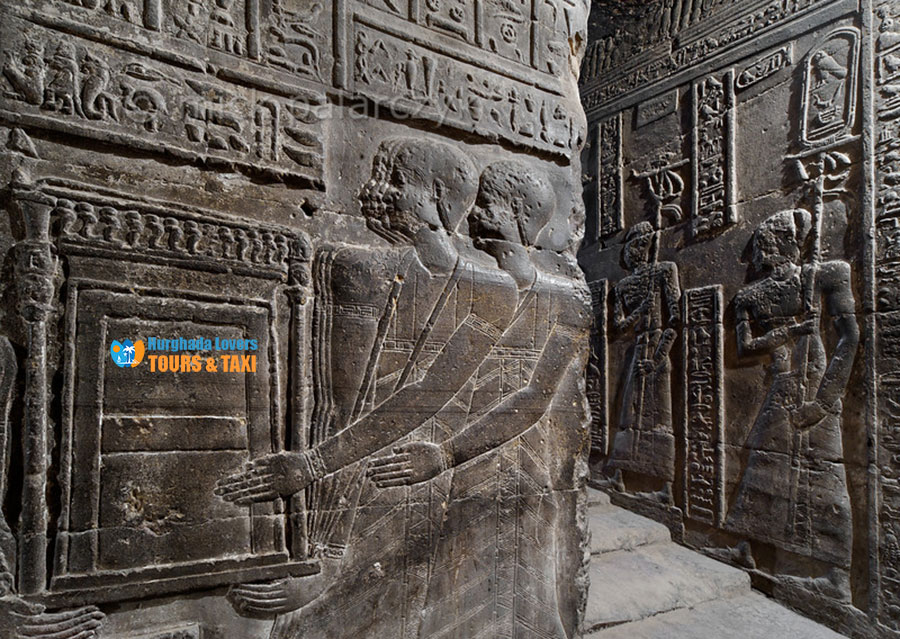


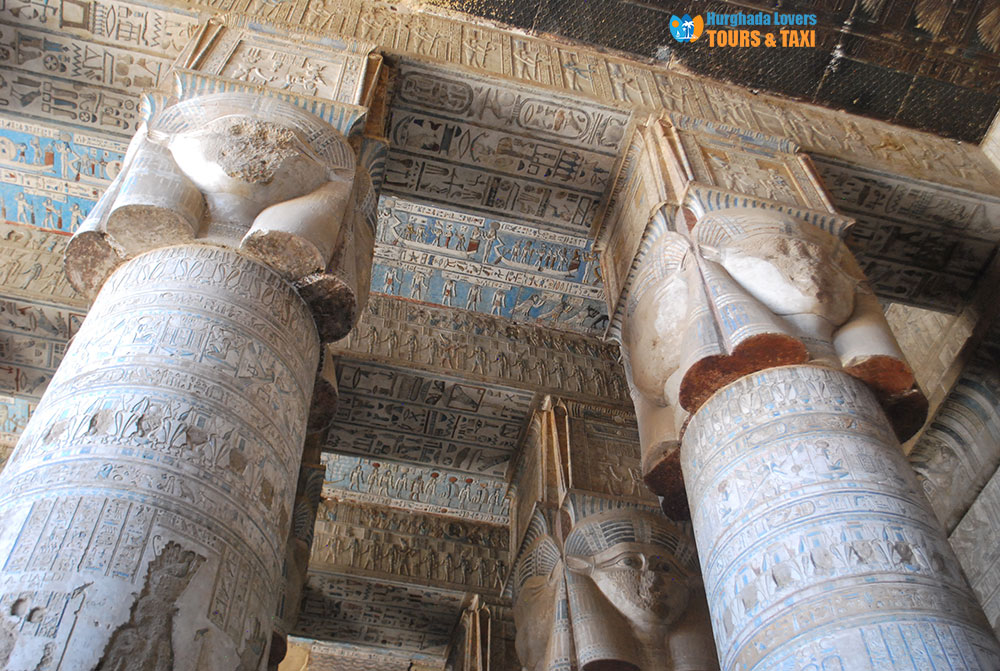
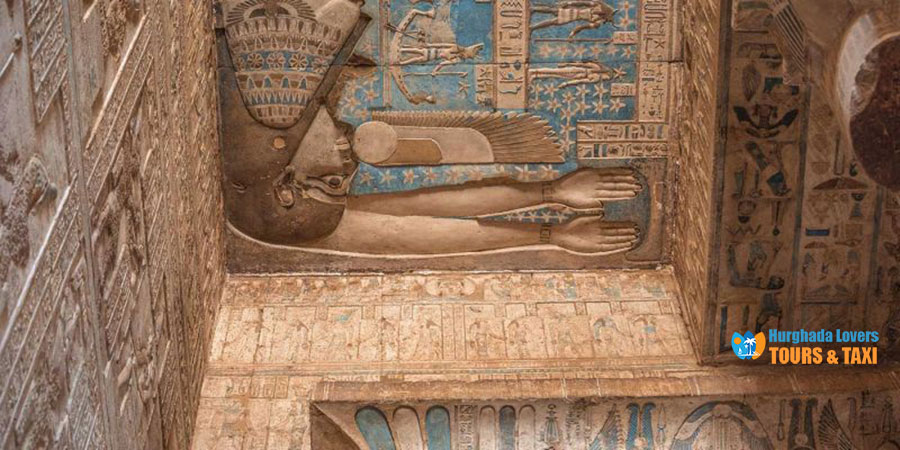
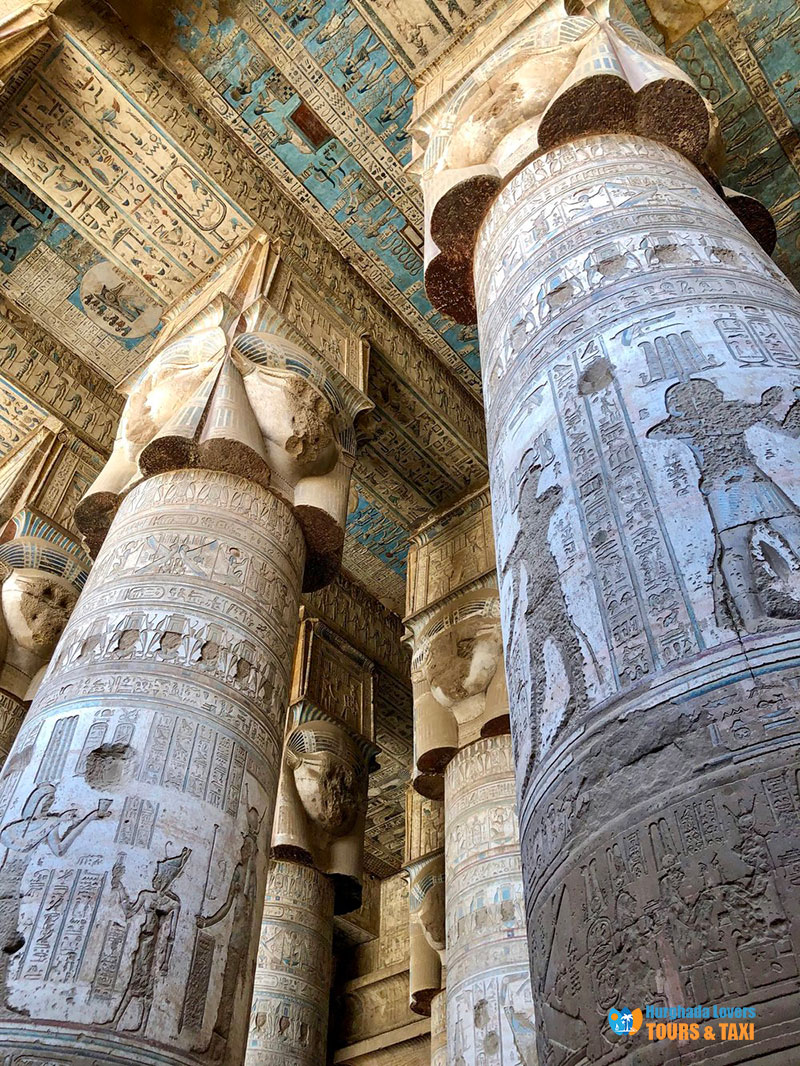
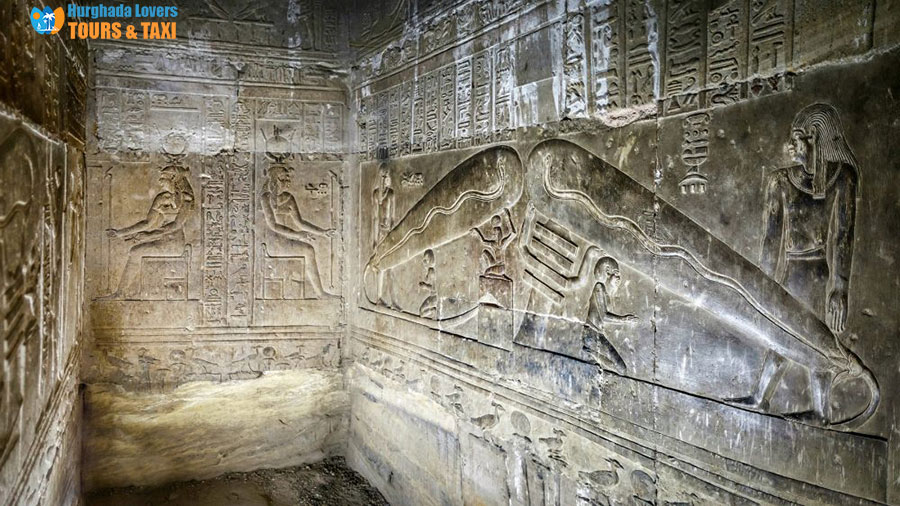
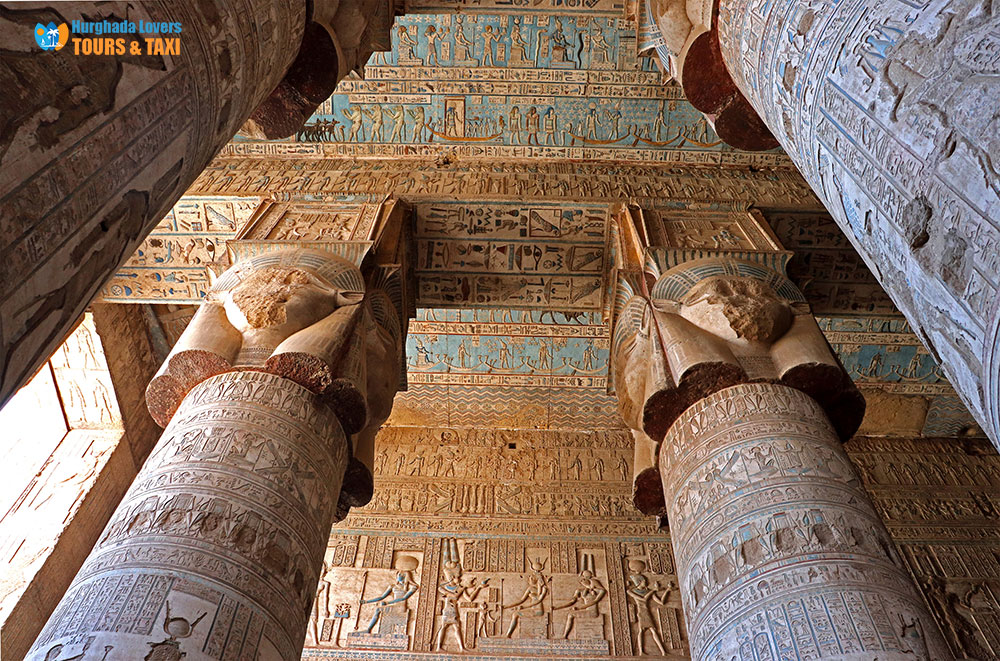
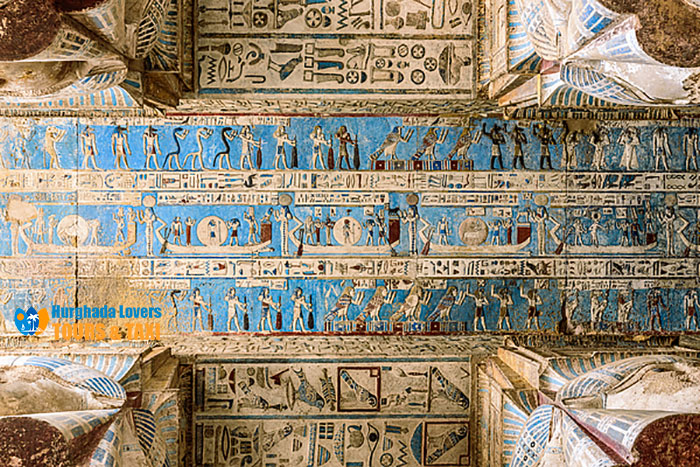

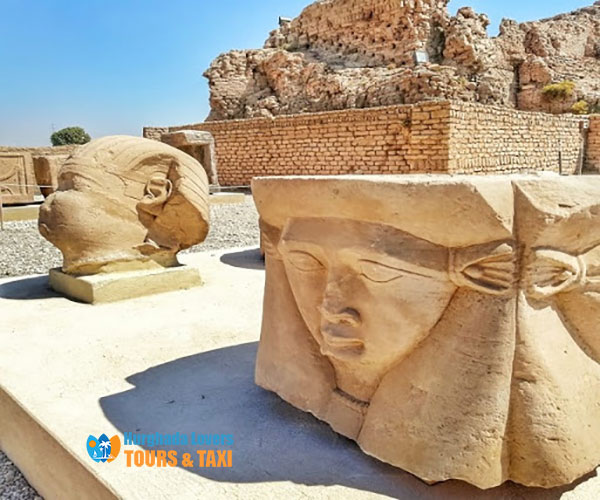
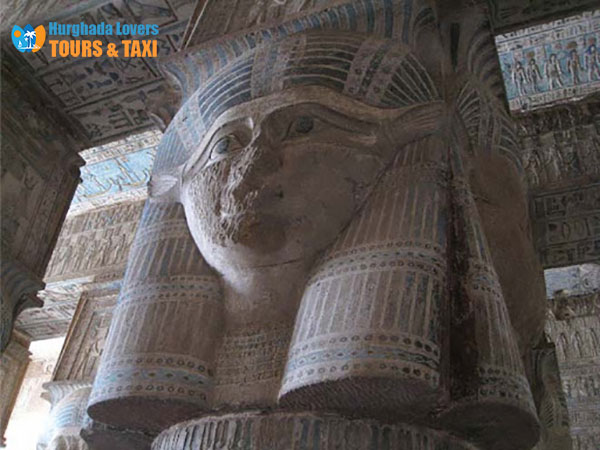
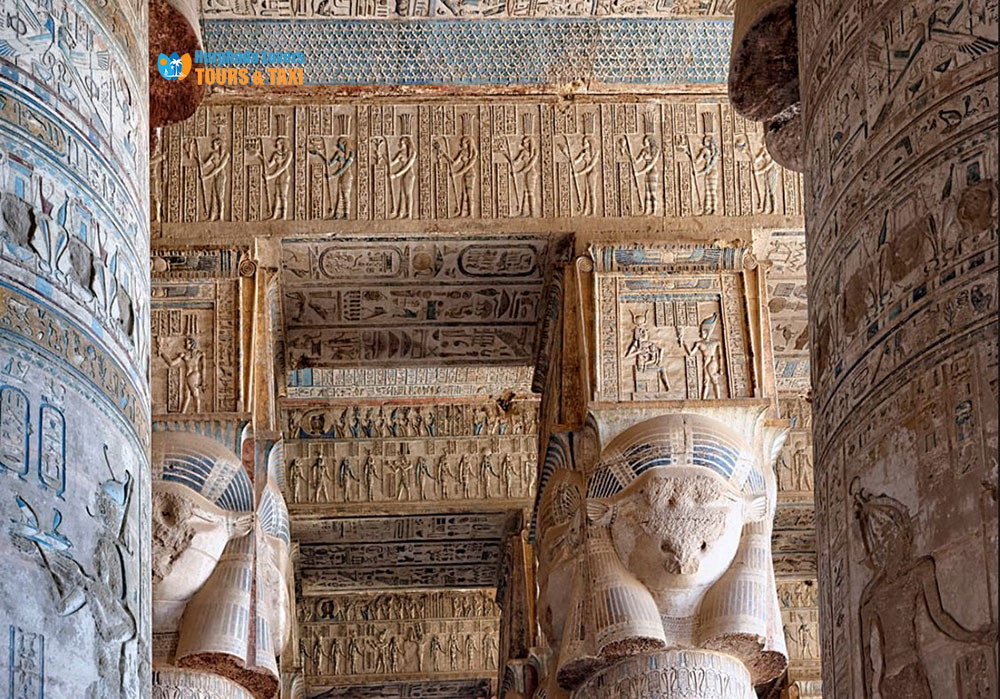
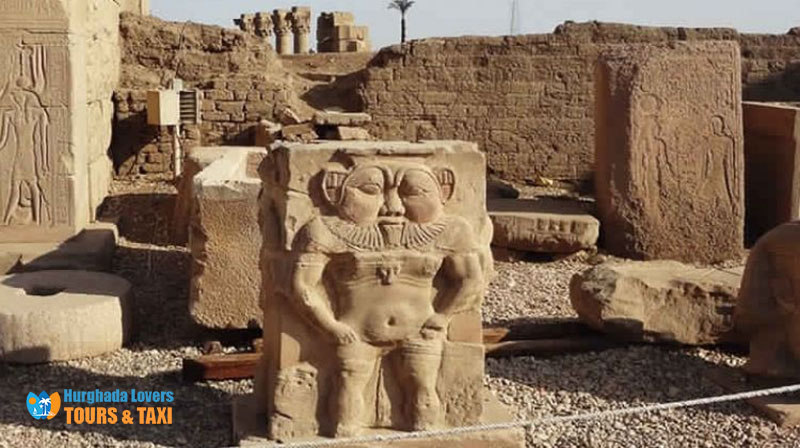
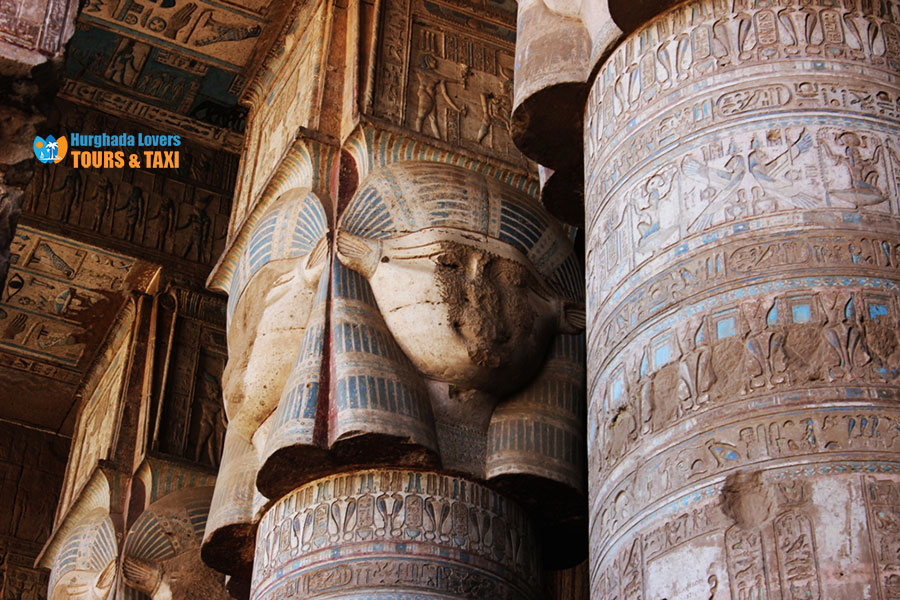
Temple of Dendera Qena Egypt | The Pharaonic Hathor Temple
